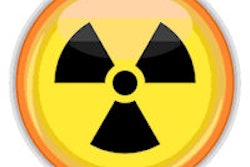
A new study of CT referrals in a large academic hospital in Saudi Arabia has underlined the need to increase collaboration between clinicians and radiologists in order to follow appropriateness guidelines, attain radiation dose reduction strategies, and avoid misuse of the modality.
Research shows that patients are being exposed to ionizing radiation without proper clinical justification, according to Sarah K. Hagi, PhD, a biomedical engineer and assistant professor, and Mawya A. Khafaji, PhD, a medical physicist, both from the department of radiology and medical physics at King Adulaziz University Hospital in Jeddah, Saudi Arabia.
In a poster presentation at this month's U.K. Radiological Congress (UKRC) in Manchester, they noted that a significant percentage of CT requests are inappropriate, especially those for children, and this raises public health concerns on current referral practice.
"The need to develop local guidelines or adapt international ones for imaging referrals is of great importance. Applying such guidelines can reduce the number of CT requests that are of no benefit and only contribute to a dramatic increase in patients' radiation exposure," the two authors wrote.
More than 60 million CT scans are performed annually worldwide, and though these examinations are of utmost importance in effective management and follow-up, it is common knowledge there is a degree of misuse of the modality, they continued. A dramatic increase in the amount of ionizing radiation patients are being exposed to has accompanied this growth, making it essential to establish guidelines to promote safe practice. Overuse of radiology services has been reported in the literature due to the lack of transparency in the area of justification of medical exposure among practitioners, Hagi and Khafaji stated.
The authors' objectives were to evaluate current CT referral practice, with an emphasis on correct clinical data and examination choice, and to investigate turnaround times on brain CT scans. They conducted a retrospective analysis of all CT examinations in the RIS database at King Abdulaziz University Hospital. All requests were analyzed by subspecialty radiologists for adherence to iRefer, imaging referral guidelines published by the Royal College of Radiologists (RCR).
The appropriateness of requests was investigated by two radiologists. The study population was grouped as follows:
- A+ = patients who had an appropriate clinical indication for the referred examination and had a positive result.
- A- = patients with an appropriate clinical indication but with a normal report.
- I+ = patients with an inappropriate or poorly defined clinical indication but with positive findings.
- I- = patients with an inappropriate clinical indication and normal report.
The authors assessed the radiology services in terms of appointment turnaround time, defined as the time from date of request, to date of performance of the examination, to date of report issuing. A total of 2,322 records were analyzed, of which 1,695 (73%) were for adults and 627 (27%) were for pediatric patients. Of the total sample, 1,300 (56%) were male, for whom the mean age was 42.2. For the 1,022 women, the mean age was 45.7.
Of the CT requests, 856 (37%) were for brain scans, of which 396 (46%) were requested by the emergency department. The total number of examinations performed with inadequate clinical information was 111 (13%), and among those were 17 (15%) pediatric patient requests. The appointment turnaround time ranged from zero to 210 days, with a median of zero days, while the report turnaround time was one day, with a range of zero to 38 days. For the 856 brain CT exams, 644 (75%) had an appointment turnaround time of zero days, while only 29 (3%) had eight days or more.
The results indicate that 744 (88%) of request forms had adequate clinical information, while 107 (13%) were inadequate. In addition, 94 (11%) of examinations were found to be unjustifiable but below published audits. Although the percentage is low, the radiation dose to patients is still not justified, they noted.
Inappropriate referrals appear to be a growing problem. Earlier this month, the head of radiology at a U.K. hospital in the northwest of England wrote a letter to all staff to complain about a significant increase in poor quality imaging referrals. He gave these three major examples:
- Misrepresenting the disease status of the patient with incomplete information, which also reduces reporting accuracy by about 10% (e.g. requesting CT for enteric organism septicemia when the elderly patient has a known bowel cancer)
- Doing repeat CT pulmonary angiograms on patients with disseminated cancer
- And doing repeat CT examinations for abdominal sepsis when ultrasound would be equally good or better in the case of gallstones
According to the letter, this problem can be resolved by: checking the patient file before every request (this is the quickest and easiest method and is often a useful source of clinical information anyway); checking the notes properly and getting the facts straight; and getting a good history.


















